Albino Chickens: Real Or Just A Myth?
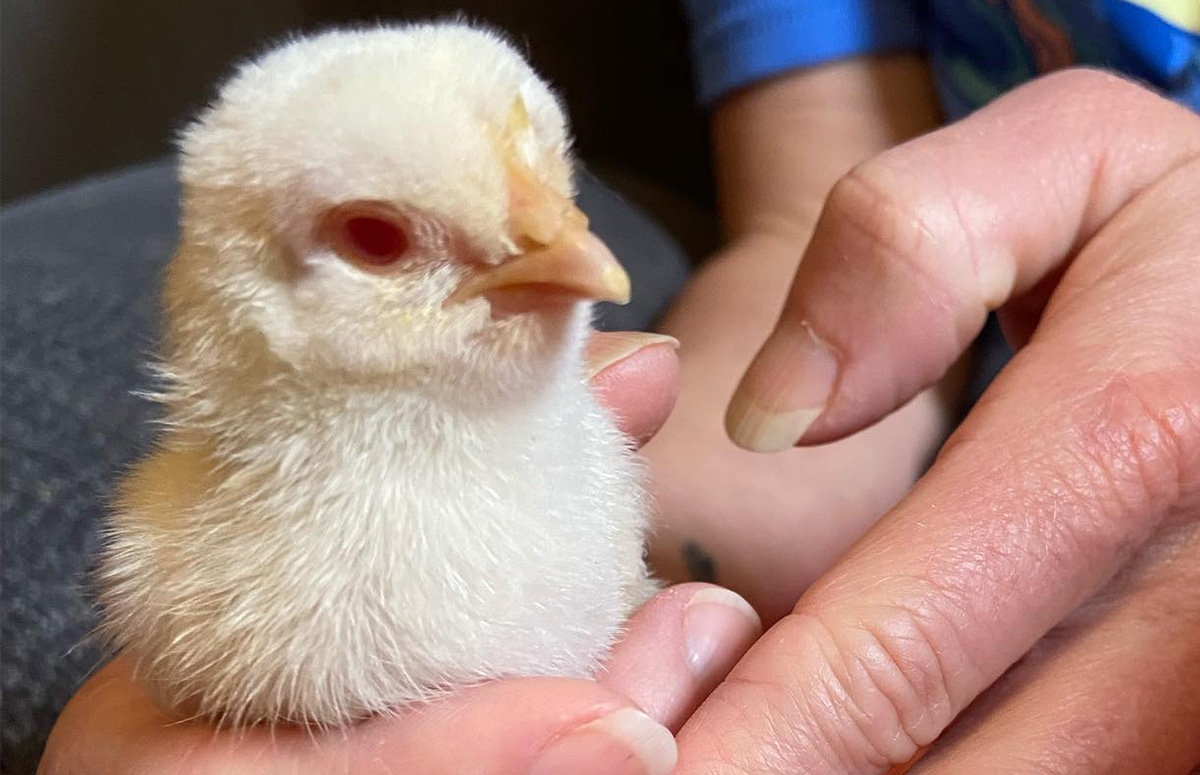
Have you ever found yourself scouring the depths of the internet, searching for the truth about albino chickens? Well, buckle up because we’re about to unravel the mystery! But before diving in, let’s ensure we’re all on the same page. Do you know what an albino is?
If you’re nodding your head confidently, remember when you’ve spotted a flock of snow-white chickens. Did you assume they were albino? Because they are not. Let’s see what albinism really is.
What is Albinism?
Albinism is a genetic condition characterized by the absence of melanin, the pigment responsible for coloration in the skin, hair, and eyes. It results in a pale appearance, along with reddish eyes, vision problems, and increased susceptibility to skin-related issues.
Now, let’s clear the air right away. Albino chickens are not just a figment of our imagination. They do exist! There seems to be skepticism surrounding their existence due to the scarcity of documented cases and evidence about these rare creatures.
Do Albino Chickens Exist?
Yes, albino chickens exist, although they are not that common. People only doubt these chickens’ existence because it’s quite rare, and there aren’t too many recorded cases that showcase this phenomenon.
For those still having doubts, this condition doesn’t just occur in chickens. There are recorded cases of albino ducks, mice, crocodiles, and, also, humans. They are real, as they all share the same condition, albinism.
Are All White Chickens Albino Chickens?
No, not all white chicken breeds are albino chickens. Albino chickens have a specific genetic condition called albinism, which results in a lack of melanin, giving them a pale appearance. They lack pigmentation in their eyes, beak, and legs. The best way to differentiate them is to look at their eyes. Albino chickens have reddish-to-pink eyes, while plain white chickens have dark eyes.
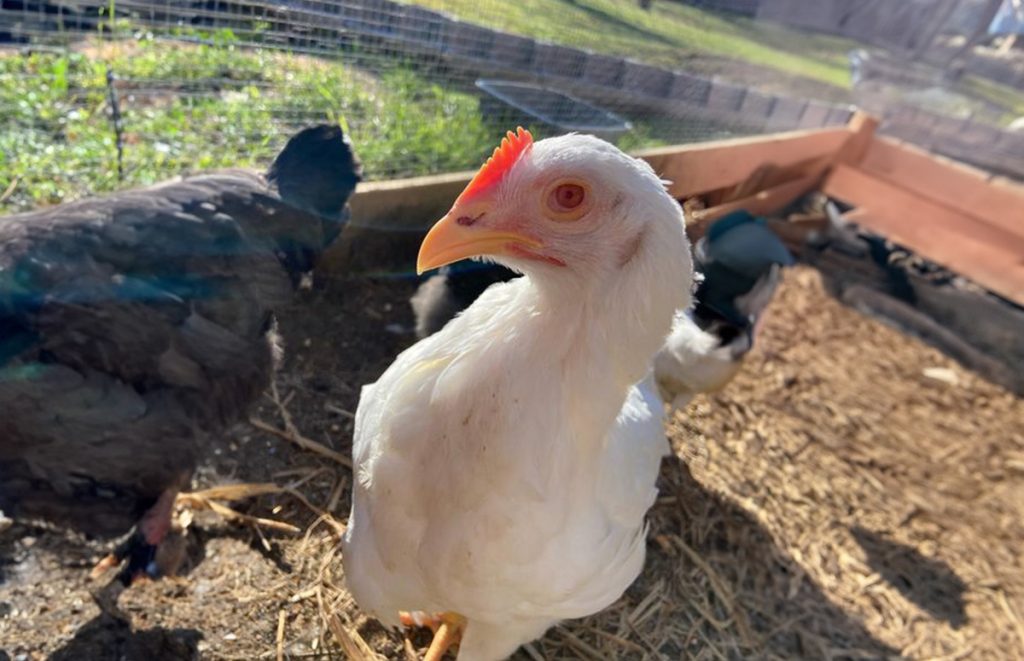
Another way is by checking their beak, legs, wattle, and comb. Compared to a normal white chicken breed, albino chickens have a paler complexion in those areas.
So the next time you come across someone advertising a white chicken as an albino chicken, take a good look at it. That way, no one can pull one over you when trying to find the real deal.
White chicken breeds have a unique charm that separates them from albino chickens. If you wish to know more, why not check out this article: ‘Stunning White Chicken Breeds For Beginners‘.
Are Albino Chickens Rare?
Yes, albino chickens are quite rare. There are no specific numbers for chickens, but in birds, albinism is seen in about 1 of every 1800 birds. To pass on this condition to the next generation, both parents must carry the rare recessive gene that causes albinism.
If you plan on finding an albino chicken, your best bet is to visit a farm or breeder with one. Trying to find one in the wild is like trying to find a needle buried in a haystack.
Additionally, albinism comes with more than just a lack of coloration. Those that express this condition also showcase poor senses, a general weakness throughout the body, a decrease in size, and are more susceptible to diseases.
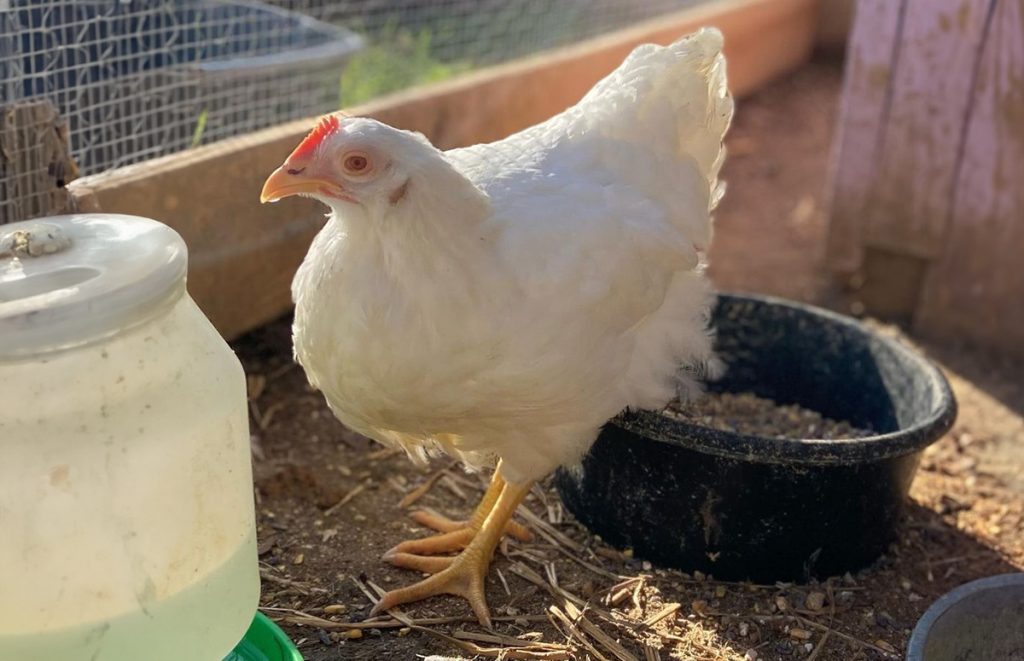
All of this blends into the perfect recipe for why finding an albino chicken in the wild is exceedingly rare. An albino chicken needs to survive the harsh realities that come with the environment, such as predators and competition between its brethren.
And since albino chickens don’t have any desirable traits, they often lack a partner during the mating season. This adds another layer of difficulty when passing the condition on to the next generation.
Possible Health Issues in Albino Chickens
Albino chickens are more susceptible to certain health issues than chickens without this condition. The lack of melanin in their skin makes them more vulnerable to skin-related problems. Additionally, albino chickens may have vision impairments, leading to difficulty navigating their surroundings.
However, with proper care, including providing adequate shelter, nutrition, and veterinary attention, albino chickens can lead healthy lives. It’s important to note that individual health can vary among chickens, regardless of their pigmentation.
Albinism vs. Fibromelanosis
Is there a counterpart to albino chickens? Well yes, the opposite of albinism in chickens is known as fibromelanosis. Let’s call them “fibro chickens” for short.
Fibromelanosis occurs when there’s an excessive amount of melanin in chickens. If a lack of melanin turns chickens white, an abundance of it turns them completely black. Talk about a dramatic contrast!
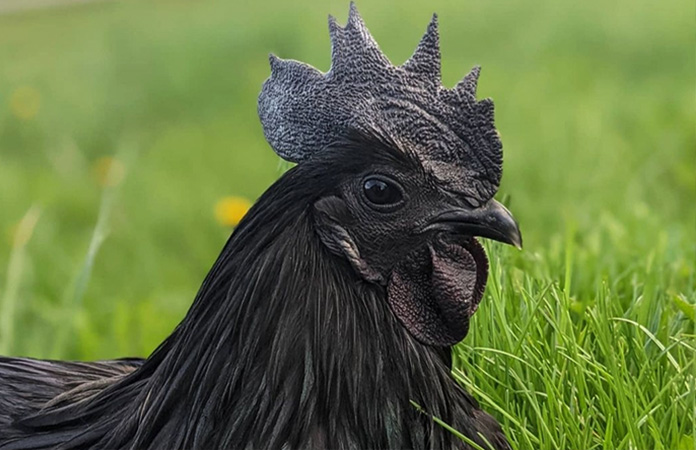
Additionally, fibro chickens are not as rare as albino chickens. Unlike the gene responsible for albinism, the fibromelanosis gene is dominant. This led to plenty of crossbreeding over the years to produce chickens with that jet-black color, such as Silkies, Ayam Cemani, Fibro Easter Eggers, or Mystic Onyx.
If you want to learn more about genetics and general breeding, check out the article ‘Chicken Breeding And Genetics‘.
Examples Of Fibro Chickens
The most popular and famous of them all is the Ayam Cemani, which hails from Indonesia. Its name’s literal translation is thoroughly black because the chicken breed is jet-black in color from head to toe and inside out.
This chicken breed also goes by ‘Lamborghini of Poultry’ because of its breathtaking appearance. In Bali, this chicken breed is a popular gamecock due to its increased thigh muscles compared to other chicken breeds, often leading to faster and stronger performance.
Due to the popularity of this chicken, many enthusiasts sought to find and create hybrids that sport this coloration. One example of this is the Fibro Easter Egger.
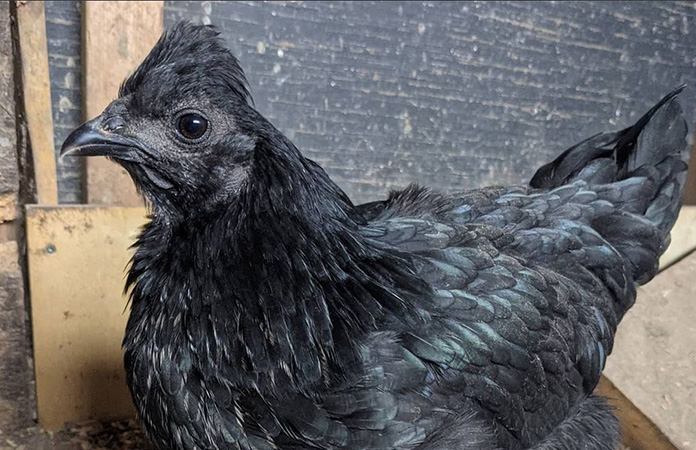
It has many qualities and features that many people are looking for in the Ayam Cemani, namely, the overall jet-black color. Unlike the Ayam Cemani, though, the Fibro Easter Egger exceeds it regarding egg and meat production and is much cheaper!
On top of that, they are colorful egg layers. They can produce blue, green, gray, and even pink eggs. Many breeders express that Fibro Easter Egger is the newest designer chicken on the block because of how much potential it holds.
To learn more about black chicken breeds, check out the article ‘Eight Beautiful Black Chicken Breeds‘.
Summary
Albino chickens are real, captivating creatures with a genetic condition called albinism. This condition causes a lack of melanin, resulting in their unique pale appearance. Albino chickens have reddish-to-pinkish eyes and often exhibit paler complexions in their beak, legs, wattle, and comb compared to regular white chicken breeds.
There are hundreds of chicken breeds in the world! If you want to get to know them all, rare or common, heritage or hybrid, go to our ‘All Chicken Breeds & Types Worldwide: List of 500+ Breeds‘.
To learn more about chicken breeds, check out our ‘Chicken Breeds Page‘ to see every specific breed we address. Or go to our listicle breed summary on ‘The Classroom‘, or, if you’re unsure where to start, take a look at our ‘Chicken Breeds: Ultimate Beginners Guide‘.
Related Questions
Albino chickens are chickens with a genetic condition called albinism, resulting in a pale appearance and reddish eyes due to a lack of melanin pigment.
Yes, albino chickens are rare. There are no specific numbers for chickens, but in birds, albinism is seen in about 1 of every 1800 birds. To pass on this condition to the next generation, both parents must carry the rare recessive gene that causes albinism.
Albino chickens are more susceptible to certain health issues than chickens without this condition. The lack of melanin in their skin makes them more vulnerable to skin-related problems. Additionally, albino chickens may have vision impairments.






















